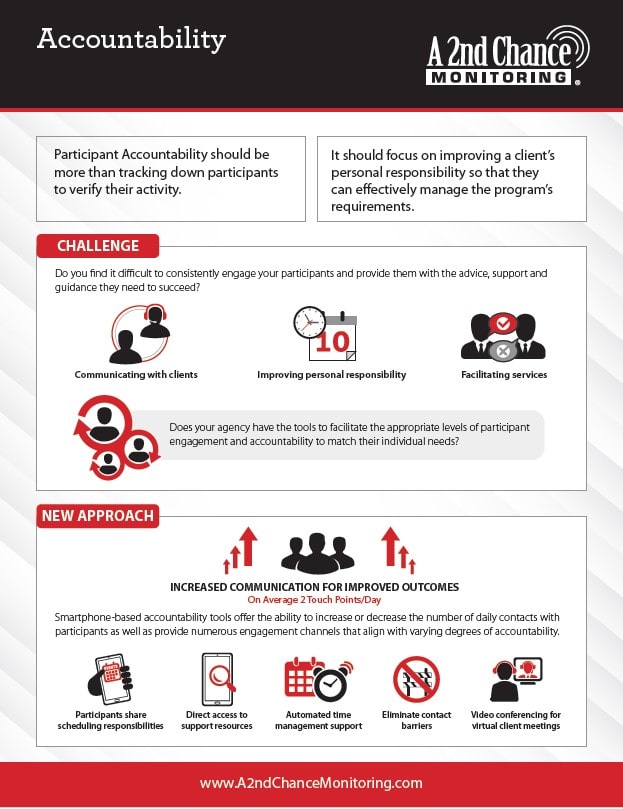April is Second Chance Month, a time to focus on reintegration and support for those who have faced legal challenges or are enrolled in an accountability program. But the concept of a second chance shouldn’t be confined to a single month. Fresh starts are an ongoing process, and technology can play a significant role in extending support to facilitate a full return to the community.
Monitoring devices can be reframed as tools for rehabilitation in five keyways:
- Promoting Accountability: Monitoring devices can help individuals stay on track with court-ordered curfews or restricted zones. This accountability can be a deterrent to re-offending and a reminder of the consequences of straying from the path.
- Early Intervention: Monitoring technology can detect potential trouble spots. For example, ankle monitors with GPS can track proximity to known high-crime areas. Early alerts can trigger intervention from probation officers or support services, preventing further issues.
- Tracking Progress: Monitoring data can be used to track an individual’s progress in completing rehabilitation programs or mental health treatment. This data can help tailor support systems and adjust strategies for success.
- Building Trust: Transparency and clear communication are key. When individuals understand the purpose of monitoring and have a say in its use, it can foster trust and collaboration with the justice system.
- Data-Driven Decisions: The data collected from monitoring devices can be invaluable for tailoring rehabilitation programs. By identifying patterns and triggers, counselors and probation officers can adjust strategies to maximize success.
Second Chances in Action
Many programs are already demonstrating the positive impact of monitoring technology:
- Remote Alcohol Monitoring: Breathalyzer ankle bracelets can detect alcohol consumption and provide immediate intervention.
- GPS Monitoring for Mental Health: Monitoring can ensure individuals attend therapy appointments or stay away from triggering locations.
- Employment Support Programs: Some programs integrate monitoring with job training, allowing individuals to work while being held accountable.
It’s important to remember that second chances require balance and need to be ethically administered. Monitoring should be used alongside therapy, support groups, and other rehabilitation efforts. It’s not a replacement, but a tool to enhance the process. Additionally, clear guidelines and open communication about data collection and usage should be in place. Individuals being monitored should understand their rights and have a say in how the data is used.
Second Chance Month is a starting point, not an ending. By viewing monitoring devices as tools for support and accountability, we can extend that second chance and create a path towards a more positive future.




